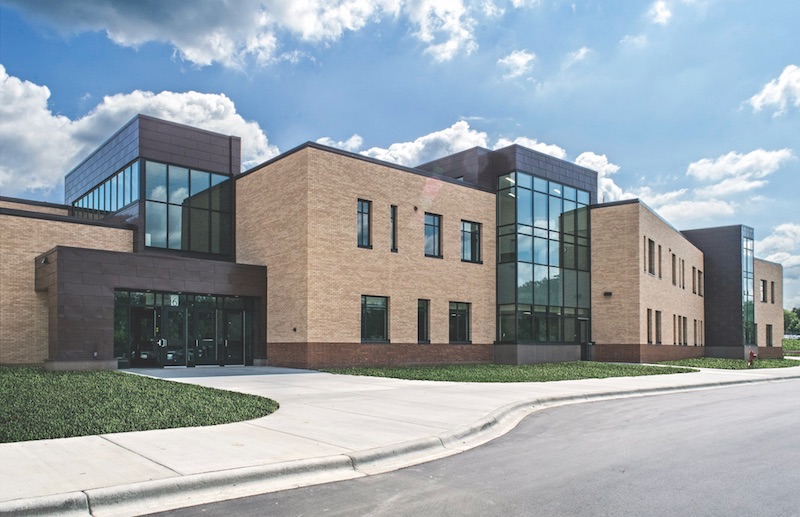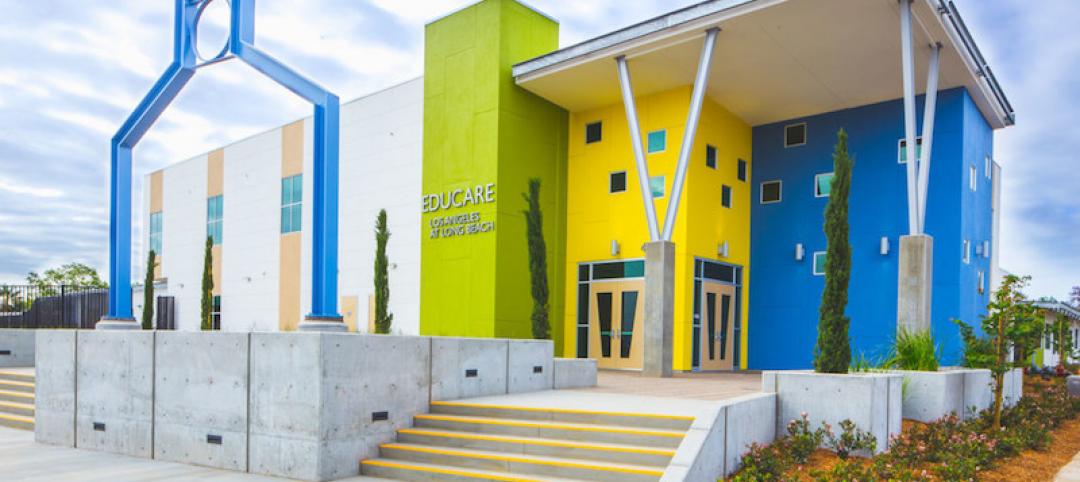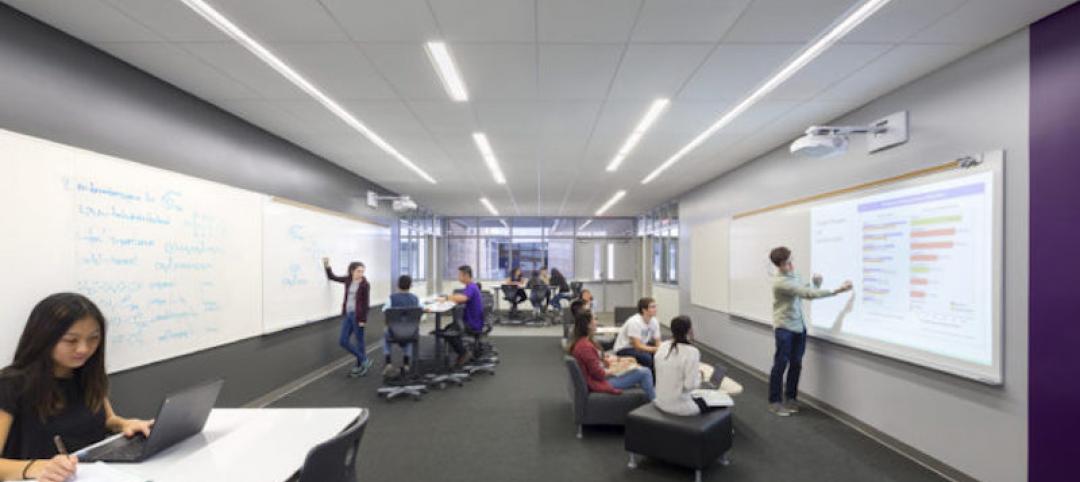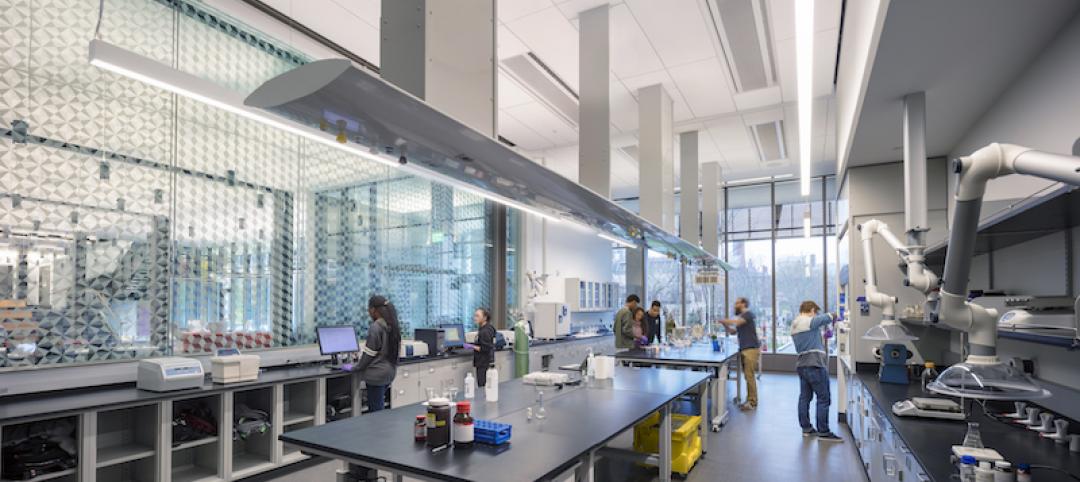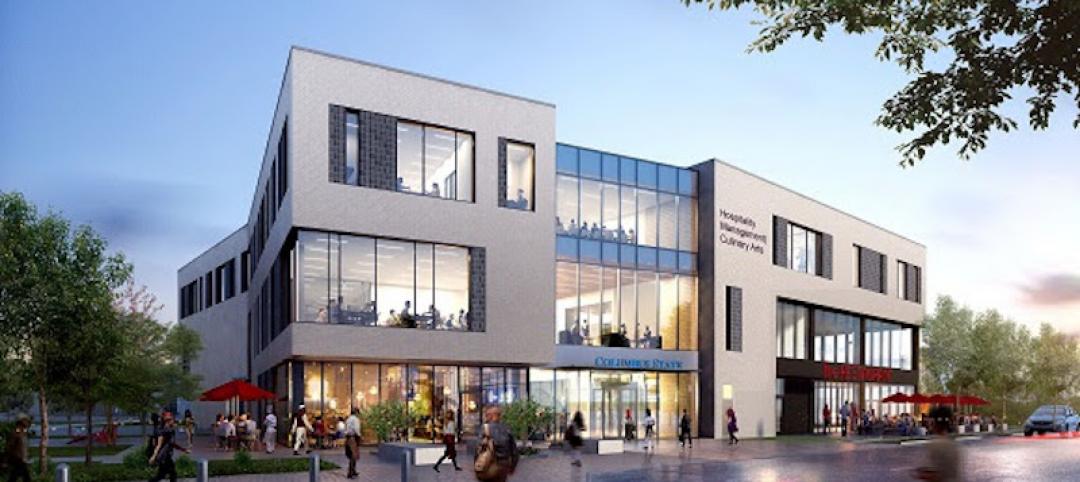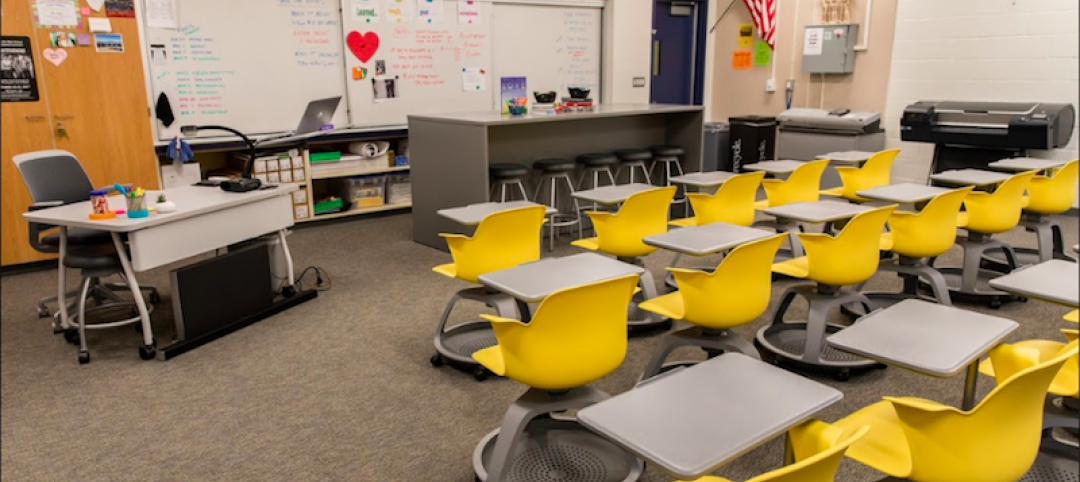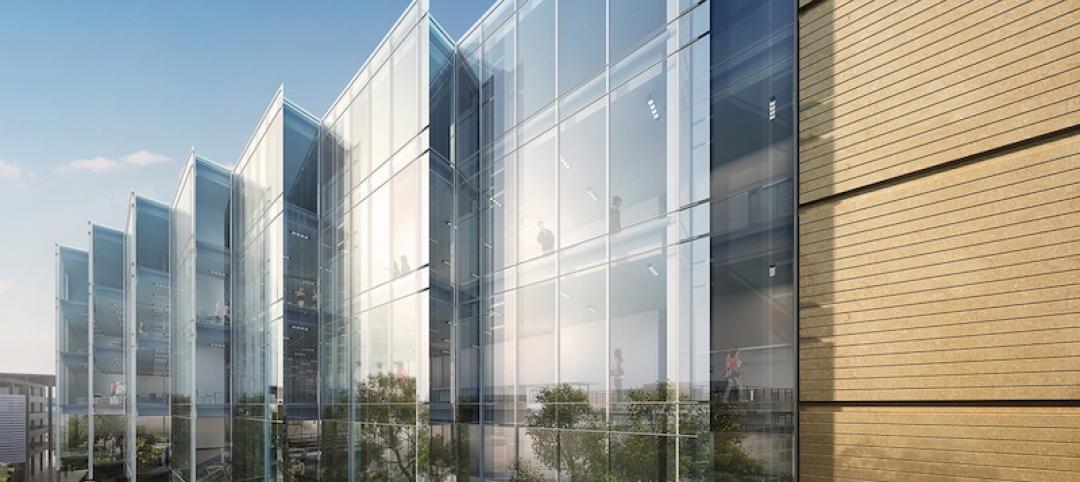Despite the constant drumbeat of news about the alarming frequency of school shootings around the country, many communities still view their schools as safe havens, and quite a few schools double as shelters from natural disasters.
In Texas, E-class buildings must include a tornado shelter, according to Jon Moreau, Balfour Beatty Construction Services’ VP of Operations, in Houston. “Some schools use underground parking garages, others use gyms or music halls. All of these shelters have hardened structures, restrooms, backup power, and air circulation systems,” says Moreau.
To keep its classrooms above the area’s seismic line, Seaside (Ore.) School District bought out nearby forestland and developed its own water reservoir for a new middle and high school campus, says David Chesley, PE, a Principal and Senior Electrical Engineer with Interface Engineering, which worked on that school’s mechanical/electrical design. BRIC Architecture designed the facility.
“Frankly, there’s funding available for this kind of thing,” says Gary Benson, Director of Project Planning and Development for Kraus-Anderson. One of his firm’s recent K-12 projects—a replacement school in Edina, Minn., that includes a tornado safe room—received some of its financing from FEMA. Another project—an elementary school for 100 students in North Dakota—was funded, in part, by a federal Emergency Impact Aid Grant (Kraus-Anderson helped that school district write its grant proposal).
See Also: Is STEM running out of steam?
But natural disasters might be the least that schools need to worry about, at a time when security is now a topic of intense national debate, and with good reason. In the first 21 weeks of 2018 alone, there were 23 school shootings where someone was killed or injured, according to CNN.
Community demand and support for securing schools are strong. But this problem is not new: Stantec has included secured vestibules in its school designs for at least 15 years, says Laura Flannery Sachtleben, a Principal in that firm’s Houston office. She and other AEC executives are the first to concede that design and construction can only do so much to help keep students safe.
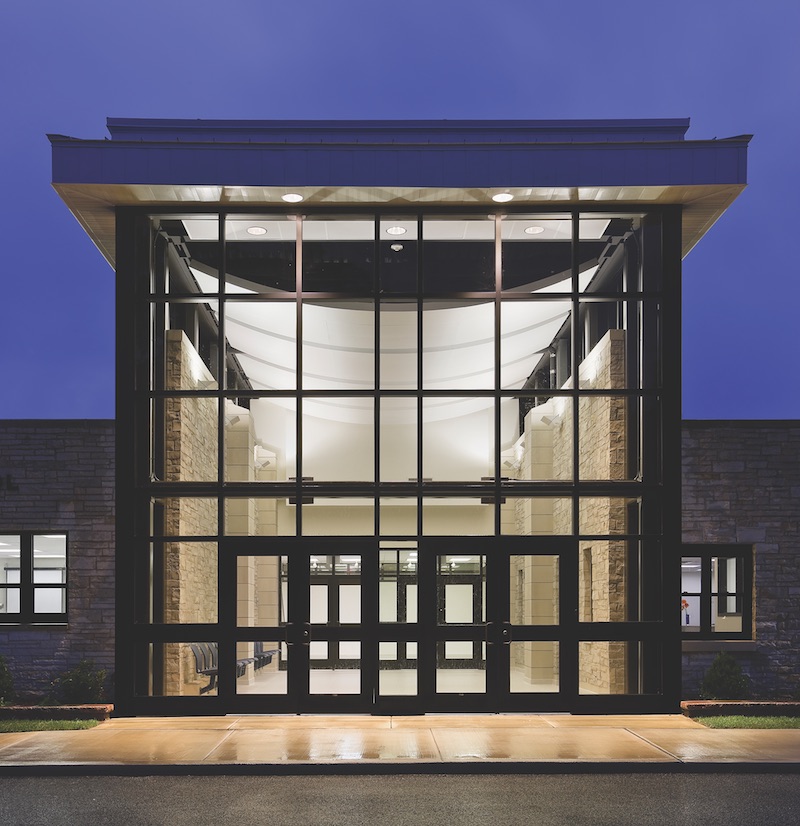 A safety audit of Parker Junior High School in Flossmoor, Ill., School District 161 identified changes to improve the facility’s overall security. One was to modify the main entrance to limit access to the building. The New Entry Pavilion separates visitor seating in the vestibule from the student seating in the office area. Craig Dugan Photography.
A safety audit of Parker Junior High School in Flossmoor, Ill., School District 161 identified changes to improve the facility’s overall security. One was to modify the main entrance to limit access to the building. The New Entry Pavilion separates visitor seating in the vestibule from the student seating in the office area. Craig Dugan Photography.
“There’s still no consensus about what works,” admits Andrew Grote, Associate Principal and Technical Director with Perkins+Will, especially when security counters transparency, another equally palpable trend in the K-12 sector.
Nevertheless, in Texas, schools are being built with bulletproof glass and drywall, and tight access controls, says Moreau. California “isn’t at the bulletproof stage yet,” says Gill Fullen, VP of Education with Balfour Beatty’s office in Orange County. “School districts are trying to evaluate what security systems make sense, like cameras and entry control points, to minimize loss of life.”
Stantec has created a firmwide internal task force that’s been vetting a series of different technologies for school security that, says Sachtleben, are less intrusive and easier
to conceal.
Any strategy for securing schools needs to start at “saving as many seconds and minutes as possible,” asserts Stephen Raskin, AIA, NCARB, a Principal with FGM Architects in St. Louis. He notes that the shooting at Virginia Tech University in 2007 lasted 17 minutes, and 11 minutes at Sandy Hook Elementary in Newtown, Conn., in 2012. The average time it takes first responders to arrive on the scene of an active shooting is 10 minutes, says Raskin.
FGM’s design strategies for school security stem from FEMA’s 428 guidelines and the Crime Prevention Through Environmental Design Association. Raskin says his firm’s solutions rely heavily on “human observation.” That means putting people at the school’s front door who can spot patterns in who’s coming and going. FGM’s school designs regularly advance the benefits of more and larger windows.
Security doesn’t have to be expensive. Raskin says ballistics-resistant window film costs about $15-$20 per sf. On the other hand, he’s dubious about whether security cameras, regardless of their ubiquity, actually deter shooters.
Other security and safety measures that FGM recommends to school districts include making corridors wider, moving the youngest students farther back in the building, allowing classrooms to be locked down individually from the inside, and making alerts as simple and clear as possible.
FGM recently worked with the NW R1 school district in Jefferson County, Mo., on a comprehensive assessment of its buildings to develop a long-range plan to establish safety priorities. The district identified 10-12 projects, and then held “listening sessions” with the public. The plan it came up with, claims Raskin, influenced the vote for a $14.5 million school bond that passed in April.
Related Stories
Modular Building | Aug 2, 2018
Educare Center in Long Beach uses modular construction to cut costs without sacrificing space or amenities
Dougherty was the Architect-of-Record.
Education Facilities | Jul 11, 2018
Why school architects must understand how students learn
Would instruction be more effective if students spent less time passively listening to lectures and more time actively learning through activities, discussions, and group work?
Education Facilities | Jul 6, 2018
Building for growth: Supporting gender-specific needs in middle school design
Today, efforts toward equity in education encompass a wide spectrum of considerations including sex, gender identity, socio-economic background, and ethnicity to name a few.
University Buildings | Jul 5, 2018
Brown University’s Engineering Research Center increases the university’s School of Engineering lab space by 30%
KieranTimberlake designed the facility and Shawmut Design and Construction was the general contractor.
University Buildings | Jul 2, 2018
Columbus State Community College’s new hospitality management and culinary arts building breaks ground
DesignGroup is the architect for the project.
Education Facilities | Jul 2, 2018
California High School renovates classrooms to meet the resurgence of Career Technical Education
Tangram Interiors handled the remodeling project.
Education Facilities | Jun 25, 2018
Behind the whiteboard: Collaborative spaces set teachers up for classroom success
Known as the Teacher coLab, the rejuvenated space takes inspiration from academic incubators in higher education.
Education Facilities | Jun 8, 2018
Data is driving design for education
In gathering this constant flow of data and recognizing the shifting trends, how can educational institutions make informed choices and smart design decisions that lead to higher efficiency and improved control over capital budgets?
| May 30, 2018
Accelerate Live! talk: From micro schools to tiny houses: What’s driving the downsizing economy?
In this 15-minute talk at BD+C’s Accelerate Live! conference (May 10, 2018, Chicago), micro-buildings design expert Aeron Hodges, AIA, explores the key drivers of the micro-buildings movement, and how the trend is spreading into a wide variety of building typologies.
| May 24, 2018
Accelerate Live! talk: Security and the built environment: Insights from an embassy designer
In this 15-minute talk at BD+C’s Accelerate Live! conference (May 10, 2018, Chicago), embassy designer Tom Jacobs explores ways that provide the needed protection while keeping intact the representational and inspirational qualities of a design.


